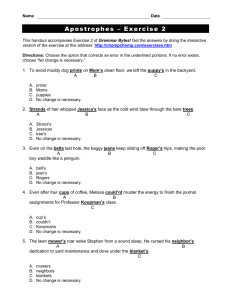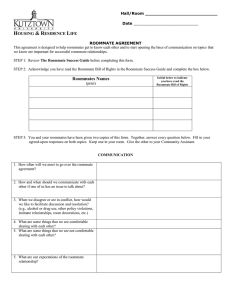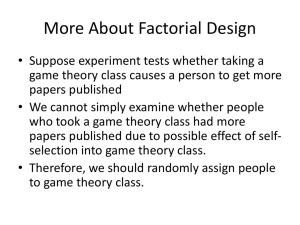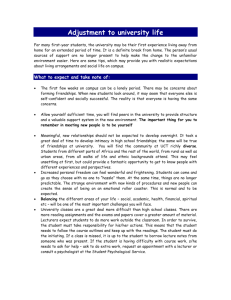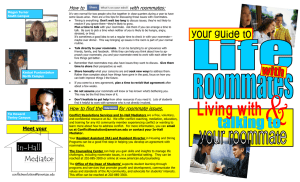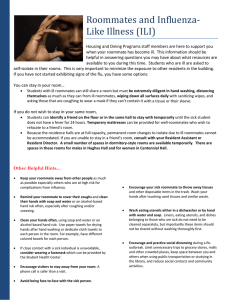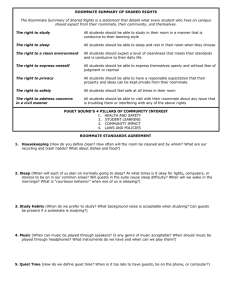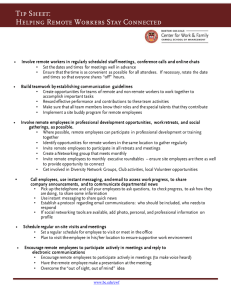Changing Patterns of Roommate Conflict Fueled by the Net A by Bill Warters
advertisement
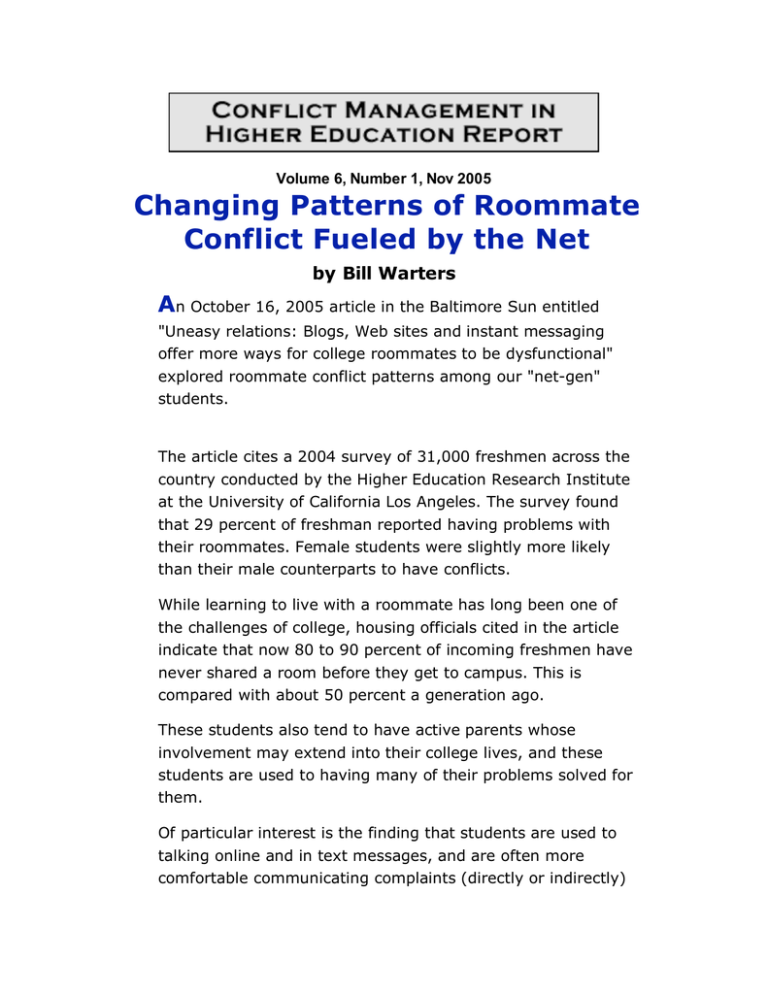
Volume 6, Number 1, Nov 2005 Changing Patterns of Roommate Conflict Fueled by the Net by Bill Warters An October 16, 2005 article in the Baltimore Sun entitled "Uneasy relations: Blogs, Web sites and instant messaging offer more ways for college roommates to be dysfunctional" explored roommate conflict patterns among our "net-gen" students. The article cites a 2004 survey of 31,000 freshmen across the country conducted by the Higher Education Research Institute at the University of California Los Angeles. The survey found that 29 percent of freshman reported having problems with their roommates. Female students were slightly more likely than their male counterparts to have conflicts. While learning to live with a roommate has long been one of the challenges of college, housing officials cited in the article indicate that now 80 to 90 percent of incoming freshmen have never shared a room before they get to campus. This is compared with about 50 percent a generation ago. These students also tend to have active parents whose involvement may extend into their college lives, and these students are used to having many of their problems solved for them. Of particular interest is the finding that students are used to talking online and in text messages, and are often more comfortable communicating complaints (directly or indirectly) via online methods instead of in face-to-face communication. Students in the same room will often using Instant Messaging to communicate rather than turning and talking to each other. They may complain about their roommate on a blog or in a chat session or using text messaging on phones, creating new ways for students to become alienated from each other. In related research not reported in the Sun article, the Higher Education Research Institute report on the American Freshman in 2004 noted an increasing polarization in student political orientations. A record number of students label themselves as politically "far left" (3.4 percent) and "far right" (2.2 percent). While still small, these numbers indicate a significant increase over time in the proportion of students who define themselves at the political extremes. Identification as either "liberal" (26.1 percent) or "conservative" (21.9 percent) is also up from 2003. The political shift away from the center, concurrent with the presidental election year, is the largest one-year shift in the thirty-five years that the item has been measured. This polarization can lead to significant tensions on campus. Certainly these results suggest a continued need for campus mediation work. And while the internet may be contributing to communication problems, it can also be employed to support constructive conflict resolution. Recent reports of high schools using instant messaging "help lines" to resolve student conflicts and colleges that are using web-based mediation intake forms are a few examples of where we may be headed in the future. As channels of communication increase, so do the opportunities for conflict. Hopefully the "digital native" mediators among us will help lead the way by developing new forms of conflict management that suit the needs and styles of today's students. I'll certainly be watching with interest.
